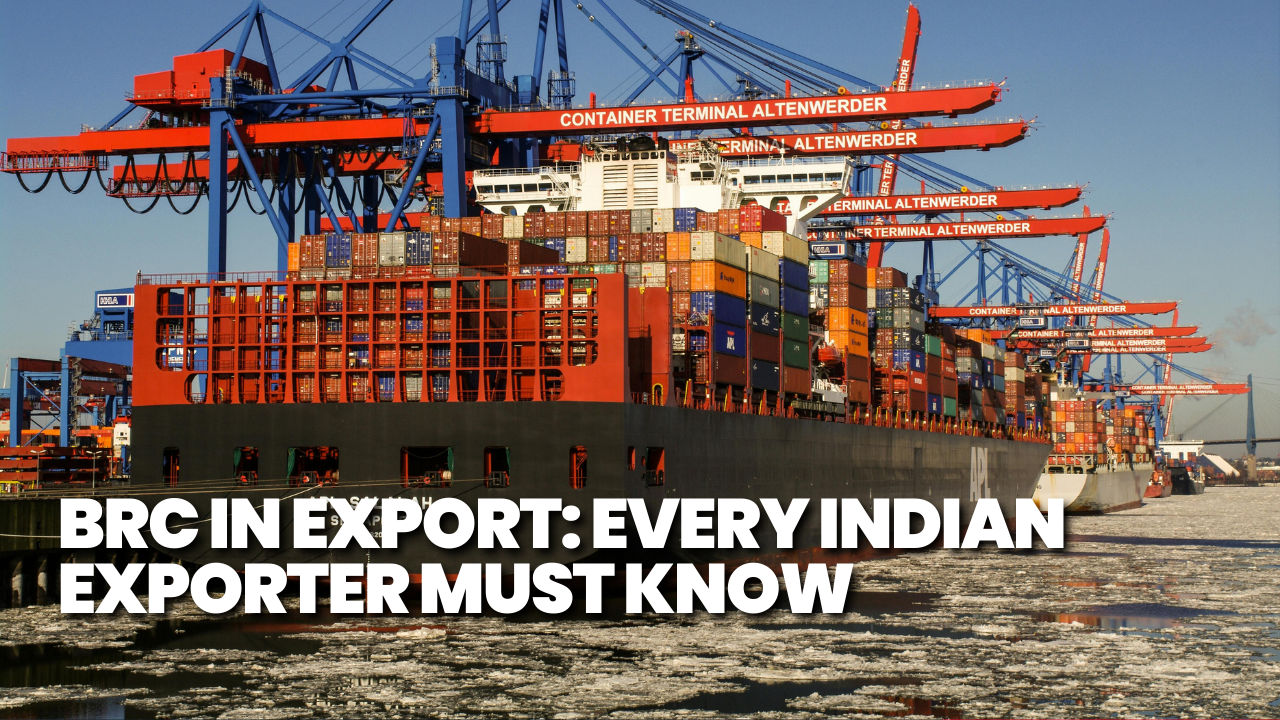
It’s not enough to send products overseas and get paid to export goods or services from India. You need to have specific papers to follow government rules and take advantage of different export incentives. The BRC is one of the most important ones.
This blog will provide the BRC full form, the BRC meaning, its significance, and how the transition to digital systems, such as e-BRC, has simplified the process.
BRC Full Form & BRC Meaning
Bank Realisation Certificate is the BRC full form.
BRC is a certificate that shows an exporter has been paid in foreign currency for goods or services they sent abroad. An authorized bank gives it. Simply, it shows that the money from a sale has been invested in India.
The normal BRC has mostly been replaced by the e-BRC (Electronic Bank Realisation Certificate), which makes the whole process faster, more transparent, and easier to access online.
What Is the Need for BRC for Exporters?
The Bank Realisation Certificate isn’t just a piece of paper. It helps Indian producers in many ways.
Proof of Receipt for Payment
Exporters must prove that other countries’ customers have paid for their goods. BRC is the official proof banks, customs, and government agencies accept.
Qualifications for Export Incentives
For export promotion programs like Duty Drawback, GST refunds, and other perks under the Foreign Trade Policy to work, you need a valid BRC or e-BRC. Exporters can’t claim these perks without it.
Regulatory Compliance
The Reserve Bank of India (RBI), the Directorate General of Foreign Trade (DGFT), and other government agencies need BRC for exports to be legal. It also ensures that producers follow the rules of the Foreign Exchange Management Act (FEMA).
Accountability and Transparency
This reliable document connects shipping bills with real payments, which is used during audits. Adding this makes things clearer and improves confidence.
Financial Reputation
Banks and other financial institutions see exporters with a clean record of BRCs as more reliable, which makes it easier to get trade finance or credit.
Advantages of Having BRC
Here are the main benefits of getting BRC on time.
- Exporters can get DGFT/GST benefits.
- Verify payment in case of a disagreement.
- Maintains compliance with RBI and FEMA rules.
- It gives you more trust in businesses and the government.
- This is helpful for audits, checks, and funding requests.
Also Read This: E-Commerce Exports Handbook for MSMEs: A Complete Guide
Practical Tips for Exporters
- You should always give your bank the correct information about your invoices and shipments.
- Check in with your bank often to make sure that e-BRC is being uploaded.
- Make a list of all the shipments and their BRC state.
- Match up the BRC data with the DGFT interface to avoid mistakes.
- For any advanced payment or partial payment cases, talk to your bank.
What is the difference between e-BRC and BRC?
BRC used to be printed on paper, but the government made the electronic Bank Realisation Certificate (e-BRC) more efficient and transparent.
BRC (manual):
When you do BRC (manually), you must physically send in your papers, which takes time and can cause delays.
e-BRC (digital)
Online banks issue e-BRCs, which are instantly linked with DGFT systems and reduce the mistakes and paperwork that need to be done manually.
This digital transition not only facilitates authorities’ monitoring of foreign exchange inflows in real time but also saves time for exporters.
Effects of Not Having a BRC
Exporters could have major issues if a BRC or e-BRC is not submitted. To stay compliant and protect your financial image, it is important to collect BRCs on time.
- It is impossible to get export benefits like Duty Drawback or GST refunds.
- Potential penalties might happen due to noncompliance with FEMA and RBI regulations.
- Exporters may have to wait longer than expected to get trade credit or loans from banks.
- During audits, missing BRCs may damage credibility and cause benefit claims to be turned down.
Wrapping It Up
The Bank Realization Certificate (BRC) is more than just a formality in the export process. What is BRC in Export? It is proof of payment, a way to get export rewards, and an important rule that needs to be followed according to RBI and FEMA rules. In simple terms, the BRC meaning reflects the confirmation that an exporter has received payment in foreign currency for goods or services sent abroad. With the shift from traditional BRC to e-BRC, exporters can now verify their payments more quickly, transparently, and efficiently.
Indian exporters can run their businesses more smoothly, get more incentives, and build their reputation internationally if they collect and send in their BRCs on time. Exporters can avoid compliance problems and get the most out of their hard work in international trade by keeping current, working closely with banks, and adopting digital systems.
FAQs
The letters BRC stand for “Bank Realization Certificate.” Banks give it to exporters to let them know that they’ve been paid in foreign currency for goods sent internationally.
BRC is needed to get export benefits, follow FEMA and RBI rules, and keep track of proof of export payment.
No. BRC only deals with payments for export trades, while FIRC confirms receipt of any foreign remittance.
Also Checkout Our YouTube Channel: @limeinstituteofexportimport






